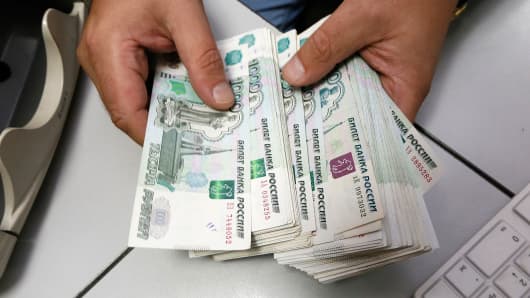Emerging markets have outperformed sharply so far in 2016. Within currency market, the Brazilian real, Russian ruble, and South African rand have topped the global rankings versus the U.S. dollar. And the MSCI Emerging Market Index has risen almost three times as fast as the S&P 500. As a multiple of their earnings over the past 12 months, emerging market stocks are trading above their 10-year average. Investors might be wondering if this boat has sailed.
But in the context of the past five years, the picture looks very different. Both currencies and stocks still have a lot of catching up to do after a long malaise. On a real effective exchange rate basis, emerging market currencies in Europe, the Middle East, Africa and Latin America are still sharply lower, and the MSCI Emerging Market equity index has significantly under performed the S&P 500. Currencies performed as expected during a period of economic weakness, depreciating to restore competitiveness.
Overall, we believe emerging market equities and currencies remain attractive on a relative basis.
First, emerging markets' macro recovery appears to be gaining strength. This time the boost to growth is not just com¬ing from stimulus in China. Brazil and Russia have been turning too. On aggregate, the manufacturing purchas¬ing managers' indices for emerging markets rose to 50.7 last month, above the 50 level that separates expansion from con¬traction. The fact that the recovery is broad-based makes it look sustainable.
Second, this seems to be feeding through into earnings. The earnings revision ratio for emerging market equities, which measures analyst upgrades versus downgrades, was at minus 40 percent in February, indicating far more downgrades. Now it is close to zero, pointing to a marked improvement in sentiment. This has been a reliable indicator of future returns. The actual earnings have stabilized too. The revival of energy and materials prices is contributing to this rebound.
Third, a shortage of alternatives is also a positive. Net inflows into emerging markets are set to be positive for the first year since 2012, according to EPFR data. Revealingly, 90 percent of the inflows have come after the Brexit vote, when the UK voted to leave the European Union. With Europe under stress, leading emerging nations seem less trou¬bled by comparison.
Federal Reserve interest rate hikes can be damaging to emerging markets, sucking out capital as risk-free U.S. rates rise. But higher U.S. rates have not proved toxic for emerging market equities in periods of positive growth.
For example, emerging market stocks did well in 1999 and 2004 when tighter U.S. monetary policy was accompanied by strong economic and earnings growth. Emerging market equities also performed poorly in 2015 and 1994 when U.S. rates were steady, but growth was weak.
The bottom line for investors is that there are good reasons to be positive about emerging market equities and currencies. For equities, much of the re-rating reflects gains in currency valuations, and the brighter earnings and macro outlook have not yet been reflected. On currencies, we are overweight a basket of emerging market currencies – ruble, real, rand, and rupee – versus a group of G10 currencies – the Australian dollar, the Swedish krona, and the Norwegian krone.
These emerging market currencies offer higher interest rates than their developed market counterparts – around eight percentage points – and at a time of improving economic growth there is less risk that these currencies will weaken.


